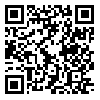Volume 14, Issue 2 (2014)
QJER 2014, 14(2): 157-178 |
Back to browse issues page
Download citation:
BibTeX | RIS | EndNote | Medlars | ProCite | Reference Manager | RefWorks
Send citation to:



BibTeX | RIS | EndNote | Medlars | ProCite | Reference Manager | RefWorks
Send citation to:
Fattahi S, Nazifi M. Modeling Real Exchange Rate in Iran using Markov Switching Autoregressive Model. QJER 2014; 14 (2) :157-178
URL: http://ecor.modares.ac.ir/article-18-9871-en.html
URL: http://ecor.modares.ac.ir/article-18-9871-en.html
1- Assistant Professor of Economics, Social Sciences Faculty, Razi University
2- M.A. in Economics, (E-mail: minoonazifi@gmail.com)
2- M.A. in Economics, (E-mail: minoonazifi@gmail.com)
Abstract: (10244 Views)
This study tries to model real exchange rate using a two-state Markov autoregressive model. The empirical results indicate that the real exchange rate cycles are well explained by a switching autoregressive pattern rather than a simple autoregressive model. The Markov switching autoregressive model (MSAR) is a non-linear method, which models volatility in financial markets well and identifies periods of regime change of exchange rate volatility. The results show that duration of staying in high volatility regime (regime 1) is less than that of low volatility regime (regime 2) in Iran. The other result is the possibility of testing for the purchasing power parity (PPP) theory, implying that existence a regular trend in data and lack of convergence potential real exchange rate to 1 leads to reject the PPP theory. Since there is a regular trend in real exchange rate data, we can reject the PPP theory in Iran. This also indicates that the real variables affect real exchange rate only in the long-run.
Received: 2012/01/9 | Accepted: 2012/10/4 | Published: 2014/05/22
| Rights and permissions | |
 |
This work is licensed under a Creative Commons Attribution-NonCommercial 4.0 International License. |







